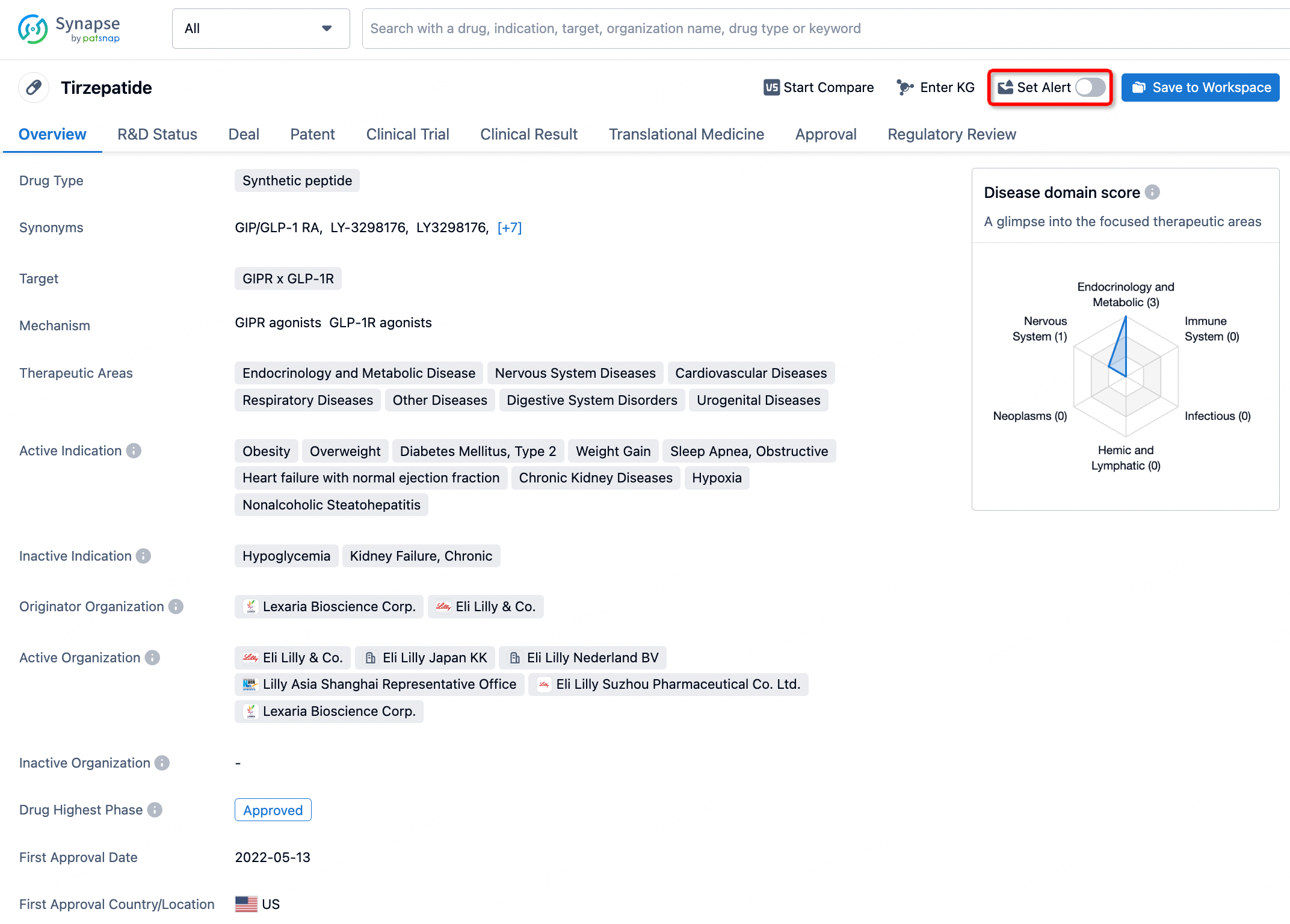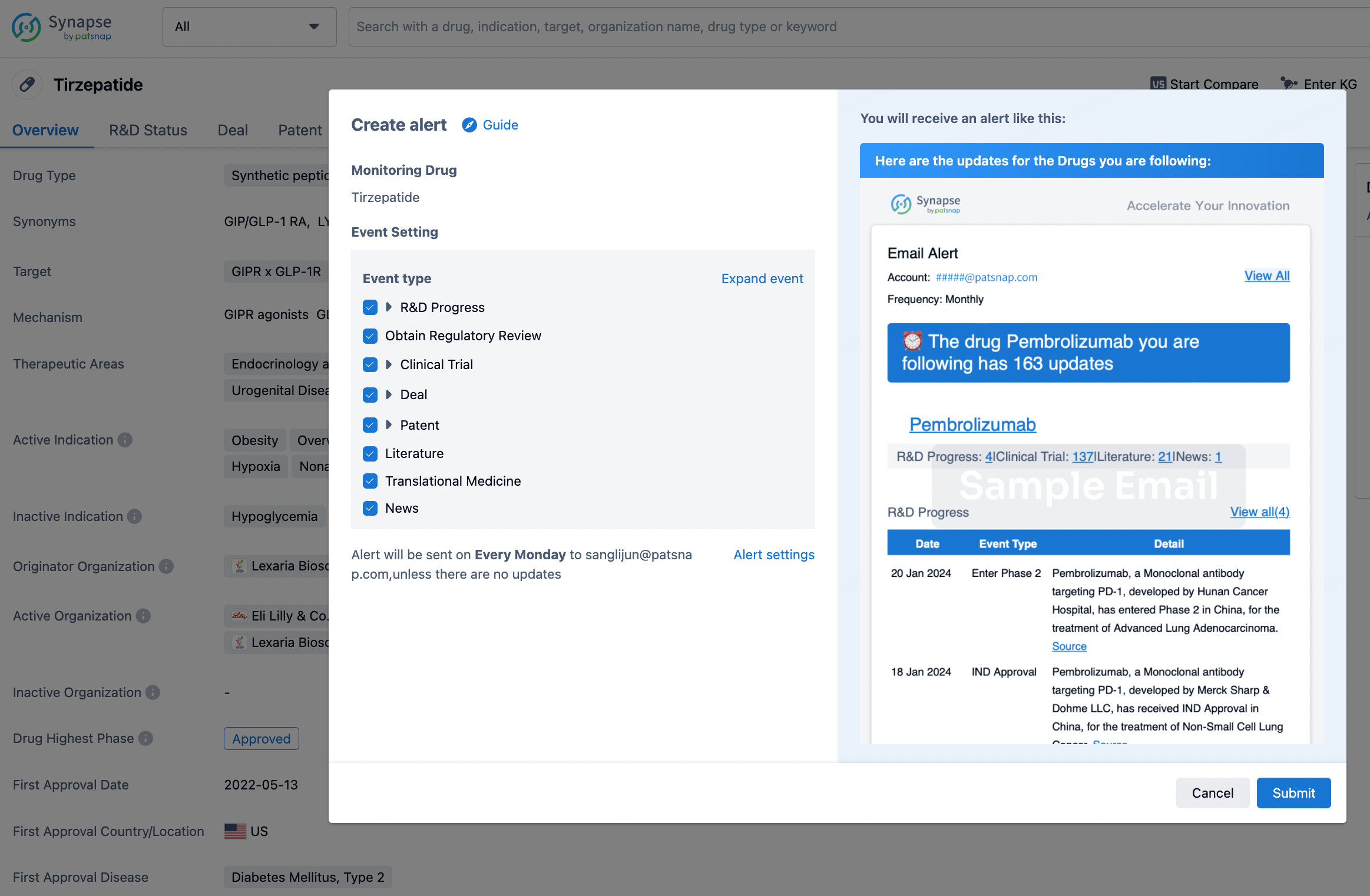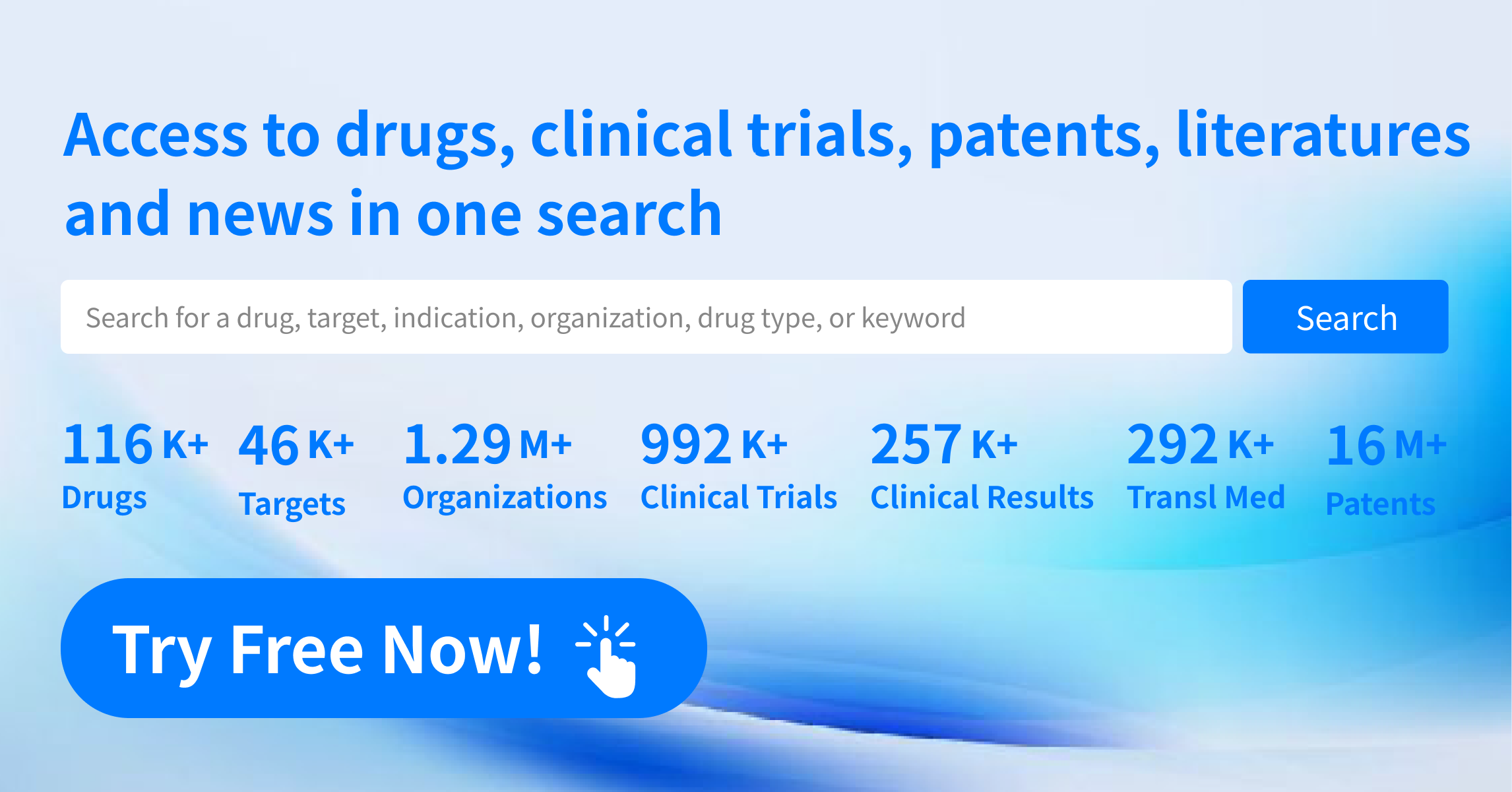Request Demo
What is the mechanism of Parnaparin Sodium?
17 July 2024
Parnaparin Sodium is an anticoagulant belonging to the class of low molecular weight heparins (LMWHs). It is utilized primarily for the prevention and treatment of thromboembolic disorders such as deep vein thrombosis (DVT) and pulmonary embolism (PE). Understanding the mechanism of Parnaparin Sodium is crucial for comprehending its therapeutic efficacy and safety profile.
The primary mechanism of action of Parnaparin Sodium involves potentiation of antithrombin III (ATIII). Antithrombin III is a naturally occurring inhibitor of several enzymes in the coagulation cascade, particularly thrombin (factor IIa) and factor Xa. Parnaparin Sodium enhances the activity of ATIII, resulting in the inactivation of these critical factors, subsequently inhibiting the formation of fibrin clots.
Parnaparin Sodium achieves this through its binding affinity to antithrombin III. The complex formed between Parnaparin Sodium and ATIII accelerates the inhibition of factor Xa and thrombin, although the effect on factor Xa is more pronounced. This differential activity is attributed to the specific structure of Parnaparin Sodium, which, like other LMWHs, has a higher ratio of anti-Xa to anti-IIa activity compared to unfractionated heparin. This higher anti-Xa activity is essential, as factor Xa plays a pivotal role in the conversion of prothrombin to thrombin, a key step in the coagulation process.
Moreover, Parnaparin Sodium has additional mechanisms that contribute to its anticoagulant properties. It can interfere with platelet aggregation and adhesion, which are crucial steps in thrombus formation. By moderating platelet function, Parnaparin Sodium further reduces the risk of clot development.
The pharmacokinetics of Parnaparin Sodium also play a significant role in its mechanism of action. After subcutaneous administration, Parnaparin Sodium is absorbed and reaches peak plasma concentrations within 3-5 hours. Its bioavailability is higher than that of unfractionated heparin, and it has a longer half-life, allowing for less frequent dosing. These pharmacokinetic properties contribute to a more stable and predictable anticoagulant effect, reducing the need for frequent monitoring of coagulation parameters.
Another aspect of Parnaparin Sodium’s mechanism is its impact on endothelial cells. It can enhance the release of tissue factor pathway inhibitor (TFPI) from endothelial cells, providing an additional antithrombotic effect by inhibiting the initiation of the coagulation cascade. This multifaceted mechanism makes Parnaparin Sodium a potent and versatile anticoagulant agent.
In clinical practice, the use of Parnaparin Sodium is associated with a favorable safety profile compared to unfractionated heparin. It has a lower risk of heparin-induced thrombocytopenia (HIT), a serious complication characterized by a significant drop in platelet count and increased risk of thrombosis. Additionally, due to its predictable pharmacokinetics, Parnaparin Sodium requires less frequent dosage adjustments and monitoring, enhancing patient convenience and compliance.
In summary, the mechanism of Parnaparin Sodium involves enhancing the inhibitory action of antithrombin III on factor Xa and thrombin, interference with platelet function, and modulation of endothelial cell activity. Its favorable pharmacokinetic properties and safety profile make it a valuable option in the prevention and treatment of thromboembolic disorders. Understanding these mechanisms provides insight into the clinical utility and advantages of Parnaparin Sodium as an anticoagulant therapy.
The primary mechanism of action of Parnaparin Sodium involves potentiation of antithrombin III (ATIII). Antithrombin III is a naturally occurring inhibitor of several enzymes in the coagulation cascade, particularly thrombin (factor IIa) and factor Xa. Parnaparin Sodium enhances the activity of ATIII, resulting in the inactivation of these critical factors, subsequently inhibiting the formation of fibrin clots.
Parnaparin Sodium achieves this through its binding affinity to antithrombin III. The complex formed between Parnaparin Sodium and ATIII accelerates the inhibition of factor Xa and thrombin, although the effect on factor Xa is more pronounced. This differential activity is attributed to the specific structure of Parnaparin Sodium, which, like other LMWHs, has a higher ratio of anti-Xa to anti-IIa activity compared to unfractionated heparin. This higher anti-Xa activity is essential, as factor Xa plays a pivotal role in the conversion of prothrombin to thrombin, a key step in the coagulation process.
Moreover, Parnaparin Sodium has additional mechanisms that contribute to its anticoagulant properties. It can interfere with platelet aggregation and adhesion, which are crucial steps in thrombus formation. By moderating platelet function, Parnaparin Sodium further reduces the risk of clot development.
The pharmacokinetics of Parnaparin Sodium also play a significant role in its mechanism of action. After subcutaneous administration, Parnaparin Sodium is absorbed and reaches peak plasma concentrations within 3-5 hours. Its bioavailability is higher than that of unfractionated heparin, and it has a longer half-life, allowing for less frequent dosing. These pharmacokinetic properties contribute to a more stable and predictable anticoagulant effect, reducing the need for frequent monitoring of coagulation parameters.
Another aspect of Parnaparin Sodium’s mechanism is its impact on endothelial cells. It can enhance the release of tissue factor pathway inhibitor (TFPI) from endothelial cells, providing an additional antithrombotic effect by inhibiting the initiation of the coagulation cascade. This multifaceted mechanism makes Parnaparin Sodium a potent and versatile anticoagulant agent.
In clinical practice, the use of Parnaparin Sodium is associated with a favorable safety profile compared to unfractionated heparin. It has a lower risk of heparin-induced thrombocytopenia (HIT), a serious complication characterized by a significant drop in platelet count and increased risk of thrombosis. Additionally, due to its predictable pharmacokinetics, Parnaparin Sodium requires less frequent dosage adjustments and monitoring, enhancing patient convenience and compliance.
In summary, the mechanism of Parnaparin Sodium involves enhancing the inhibitory action of antithrombin III on factor Xa and thrombin, interference with platelet function, and modulation of endothelial cell activity. Its favorable pharmacokinetic properties and safety profile make it a valuable option in the prevention and treatment of thromboembolic disorders. Understanding these mechanisms provides insight into the clinical utility and advantages of Parnaparin Sodium as an anticoagulant therapy.
How to obtain the latest development progress of all drugs?
In the Synapse database, you can stay updated on the latest research and development advances of all drugs. This service is accessible anytime and anywhere, with updates available daily or weekly. Use the "Set Alert" function to stay informed. Click on the image below to embark on a brand new journey of drug discovery!
AI Agents Built for Biopharma Breakthroughs
Accelerate discovery. Empower decisions. Transform outcomes.
Get started for free today!
Accelerate Strategic R&D decision making with Synapse, PatSnap’s AI-powered Connected Innovation Intelligence Platform Built for Life Sciences Professionals.
Start your data trial now!
Synapse data is also accessible to external entities via APIs or data packages. Empower better decisions with the latest in pharmaceutical intelligence.


